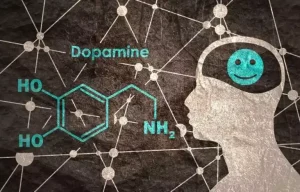
Without enough insulin, the body begins to break down fat as fuel. This causes a buildup of acids in the bloodstream called ketones. If it’s left untreated, the buildup can lead to diabetic ketoacidosis. Arrange follow-up to evaluate patients after the resolution of symptoms, in order to detect other complications of chronic alcohol abuse.
Medical Professionals
Prolonged used of alcohol can result in cirrhosis, or permanent scarring of the liver. Cirrhosis of the liver can cause exhaustion, leg swelling, and nausea. Each of these situations increases the amount of acid in the system. They can also reduce the amount of insulin your body produces, leading to the breakdown of fat cells and the production of ketones. Glucose comes from the food you eat, and insulin is produced by the pancreas. When you drink alcohol, your pancreas may stop producing insulin for a short time.

What are the symptoms of alcoholic ketoacidosis?

If your blood glucose level is elevated, your doctor may also perform a hemoglobin A1C (HgA1C) test. This test will provide information about your sugar levels to help determine whether you have diabetes. If a person is already malnourished due to alcoholism, they may develop alcoholic ketoacidosis. This can occur as soon as one day after a drinking binge, depending on nutritional status, overall health status, and the amount of alcohol consumed. When your body burns fat for energy, byproducts known as ketone bodies are produced. If your body is not producing insulin, ketone bodies will begin to build up in your bloodstream.
- Efficient and timely management can lead to enhanced patient outcomes in patients with AKA.
- Consider referral to a counselor at an alcohol treatment center.
- Mortality specifically due to AKA has been linked to the severity of serum beta-hydroxybutyric acid in some studies.
- Typical characteristics of the latter may include rhinophyma, tremulousness, hepatosplenomegaly, peripheral neuropathy, gynecomastia, testicular atrophy, and palmar erythema.
- This activity illustrates the evaluation and treatment of alcoholic ketoacidosis and explains the role of the interprofessional team in managing patients with this condition.
- Magnesium and phosphate levels should be measured and repleted if the serum levels are found low.
History and Physical

Prevention of AKA involves the treatment of chronic alcohol abuse. Restoration of volume status and correction of the acidosis may be difficult to accomplish in the emergency department alcoholic ketoacidosis (ED). Elevated cortisol levels can increase fatty acid mobilization and ketogenesis. Growth hormone can enhance precursor fatty acid release and ketogenesis during insulin deficiency.


International Patients
- Without insulin, your cells won’t be able to use the glucose you consume for energy.
- Decreased insulin and elevated glucagon, cortisol, catecholamine, and growth hormone levels can increase the rate of ketogenesis.
- Ethyl alcohol oxidizes at a rate of 20 to 25 mg/dL per hour in most individuals.
- The condition is an acute form of metabolic acidosis, a condition in which there is too much acid in body fluids.
- Treatment may involve fluids (salt and sugar solution) given through a vein.
- Alcoholic ketoacidosis is the buildup of ketones in the blood due to alcohol use.
Emergent Treatment of Alcoholic Ketoacidosis
Alcoholic Ketoacidosis: Signs, Symptoms, and Treatment
- Without enough insulin, the body can’t use sugar to make the energy it needs.
- In most cases, the patient’s endogenous insulin levels rise appropriately with adequate carbohydrate and volume replacement.
- Alcoholic ketoacidosis (AKA) is a condition seen commonly in patients with alcohol use disorder or after a bout of heavy drinking.
- People who drink large quantities of alcohol may not eat regularly.
- The major cause of morbidity and mortality in patients diagnosed with AKA is under-recognition of concomitant diseases (that may have precipitated the AKA, to begin with).
Leave a Reply